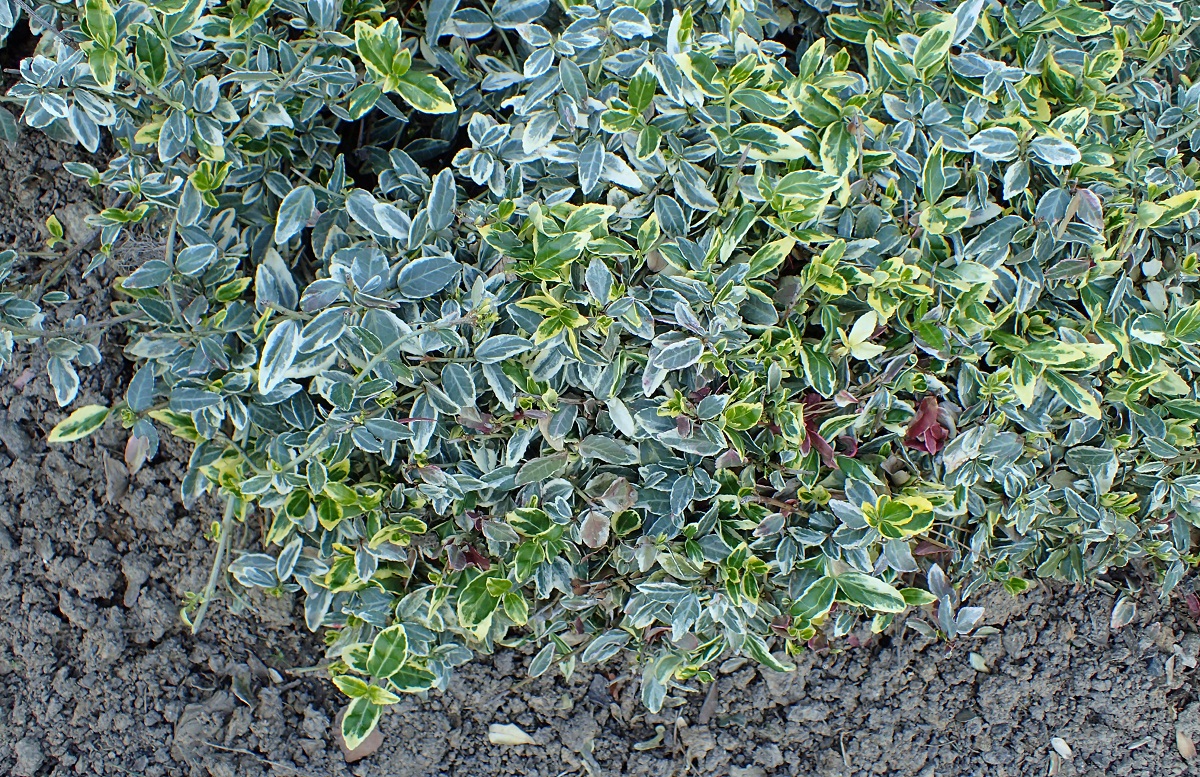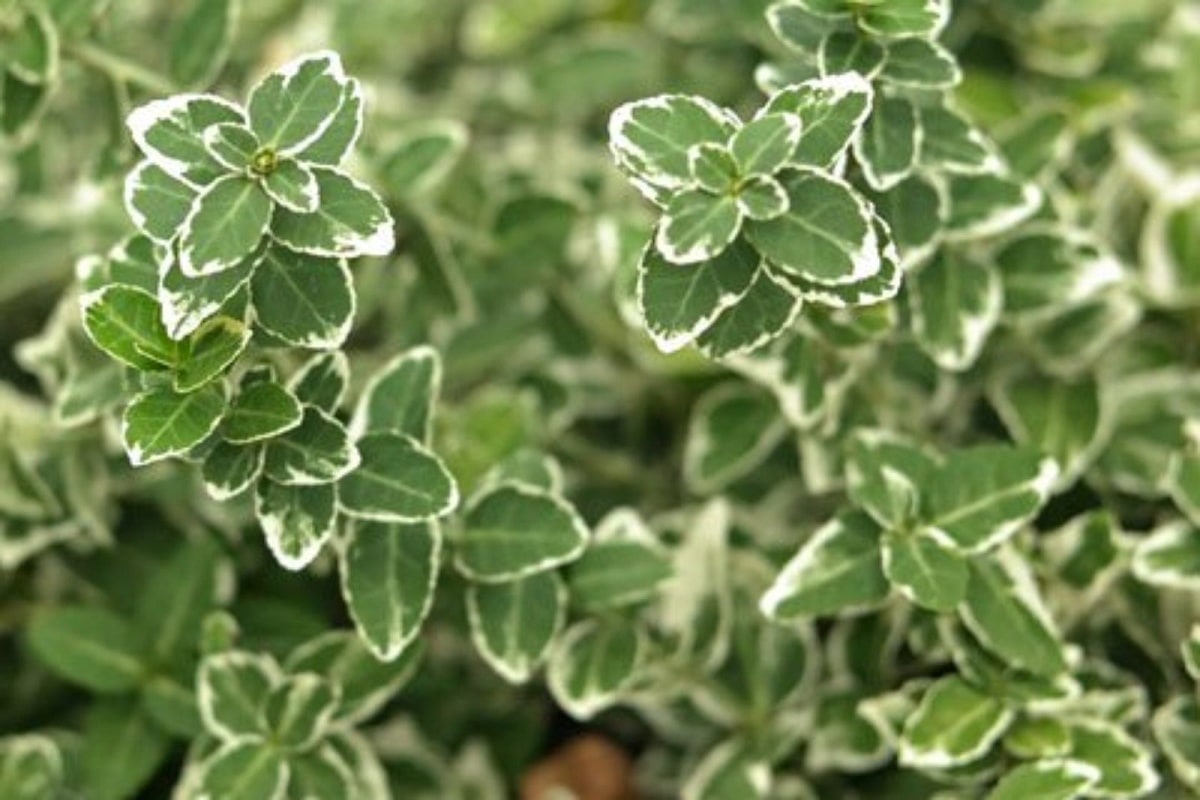
Euonymus fortunei is scientific name given to a shrub known in Asia as the spindle of fortune and in America it is popularly called dwarf bonnet or creeping bonnet. This plant is currently used for decorative purposes, because it does not have important medicinal or cosmetic properties.
We have probably seen a dwarf bonnet sometime in our life without realizing it, because these they are usually in many common gardens. They are not flashy, but they do constitute a good component for outdoor spaces.
Features Euonymus fortunei

Likewise, it is not very difficult to take care of a spindle of fortune. The truth is that it is a task that is even entertaining if you are a lover of gardening or nature. Now, if you want to know more about the Euonymus fortunei Here we leave you an article that may interest you about the characteristics and care of the plant.
It is a shrub that can reach a meter or two in height, although sometimes it has a ivy-like behavior and it is capable of upholstering entire walls. Its leaves are really strong, green with edges in yellow or cream tones.
One of the advantages of this shrub is that it is highly resistant to sudden changes in temperature. They can withstand heat waves or severe winters without dying in the process. That is why it is ideal for gardeners who are just starting out in plant care.
Another characteristic is that it has evergreen leaves. A plant is said to have evergreen leaves when they do not fall off during no season: the creeping bonnet keeps its leaves in spring, summer, fall and winter without any problem.
What is it for
Although Asians in general are famous for using herbs and plants in curing various disease symptoms, el Euonymus fortunei does not have any important medicinal properties. It is also not used in the manufacture of cosmetic or beauty products.
It serves specifically to decorate. It could then be said that it has an ornamental purpose. This plant can expand the more space you have. So we advise you that, if you want to avoid its accelerated growth, you place it in a medium pot and leave it away from the walls.
If, on the contrary, you want it to grow, then place it in the garden, next to a wall. In a short time it will start to climb and you will get a very attractive natural upholstery. Finally, do not use the spindle of fortune to prepare any infusion, or for another purpose that is not merely decorative.
Care and Maintenance
Caring for a bush is not as complicated as it sounds. Their care is easy if you pay attention. You don't need to be a great professional gardener to maintain a Euonymus fortunei in your yard or in a pot.
You can purchase fortune spindle seeds at botanical or garden stores. Too it is possible to find them on the internet, visiting one of the thousands of pages dedicated to the sale of plants and shrubs.
There are many scammers online who lie about the origin of the seeds, stating that they come directly from Korea or Japan. This makes it easy for them to raise the price up to twice its value, fooling naive buyers.
This shrub can be grown in most fertile soils, except when the ground is frozen. If this is the case, the seed will not germinate and the bush will not grow even if you follow other steps. So avoid growing in winter: the Euonymus fortunei it only tolerates low temperatures when it is in its adult stage.
Can be kept indoors and outdoors without any difficulty. Although it is advisable to plant it outdoors so that it absorbs energy and lighting from the sun's rays. However, prolonged exposure can wilt the plant.
On the other hand, withstands low temperatures. But if you leave it outside without any attention, during snowfalls or winter rains, you can be sure that it will live little. Almost all plants require a minimum of warmth in order to grow.
Irrigation
You can water the bonnet up to three times a week. Do not exaggerate in watering, since you run the risk of flooding the plant and damaging its leaves. Always use a watering can or spray. Do not water directly with a hose, because you will spoil the leaves of the Euonymus fortunei.
It is a slow growing shrub, so don't worry if you don't see progress for a couple of weeks. You will need a few good months to see great results. Therefore, do not get frustrated: already at six months you will have a beautiful bush in your home.
On the other hand, although it does not require pruning, it is not forbidden to do it once every four months, because you will not cause him any harm. It is a shrub that can be shaped with a pair of common garden shears.
Es advisable to pay a couple of times, every change of season, at Euonymus fortunei. To do this, use organic compost: there are several types that are especially useful for shrubs. Forget synthetic or inorganic fertilizers, because in most cases they bring with them components that are harmful to plant life.
If you don't want to spend money on a compost bag at the store, then you can make your own at home with ingredients. such as garlic, onion, or citrus. Some gardeners use visors or leftover fish. If you don't feel like it, you can always use orange peels boiled in water.
A plant lives as long as its gardener cares for it. That means you should pay attention once you have acquired a spindle of fortune, because these bushes are also living beings and they require care to develop over time.

El Euonymus fortunei it is a very popular plant, especially in Japan. However, today most large garden homes in Europe and America have this species. Although it does not bloom, the truth is that gives a cheerful air to outdoor spaces.
If you are going to have a Euonymus fortunei indoors, be sure to keep her away from pets like dogs, cats, or hamsters. In particular, if you have rabbits or other herbivorous animals, do not let them eat any of the leaves of this shrub, as it can be harmful to their health.
Finally, we hope that the article has been helpful to you. If you want to find out more about the family of plants that the spindle of fortune belongs to, then stay online. Here you will find everything you need to know on the subject.
This is a simple shrub that comes from Asia and can withstand harsh climates without dying in the process. Today it can be found in most parks worldwide, especially in Europe.
Thank you, I loved the information, I will put it into practice!
Hi Patricia.
We are very glad that you liked it 🙂
A greeting.